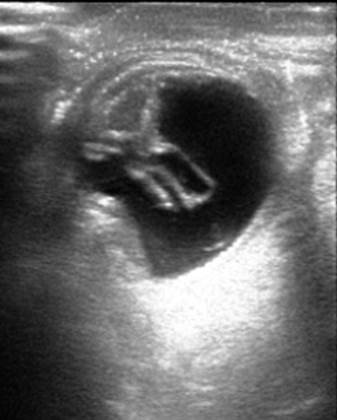#POCUS for Ocular Trauma
At EDE 2, we talk about using Ocular POCUS primarily in the search for retinal detachments and vitreous hemorrhages. It comes up less often, but we also point out its utility in the assessment of the trauma case, especially the ruptured globe. One of my colleagues in Sudbury, Dr Mark Dube, saw such a case a few months ago. Mark saw an older man with multiple health problems who had fallen outside on the sidewalk due to general instability. His face hit the sidewalk and he suffered an injury to his left eye. Here is one of the images that Mark saved:
The left eye was injured. The probe was placed in transverse, with the indicator to patient right, as usual. So medial is to screen left and lateral is to screen right. This patient had previous cataract surgery. If you compare this image to a normal image in the book, you’ll appreciate that the anterior segment is completely flattened and not visible. Contents of the anterior segment are prolapsed into the vitreous, including the lens implant. Along the medial aspect of the globe is an indented area, also consistent with rupture. It was uncertain whether or not there was a fracture of the orbit at this level on CT. The patient was taken to the OR for primary repair for globe rupture.







